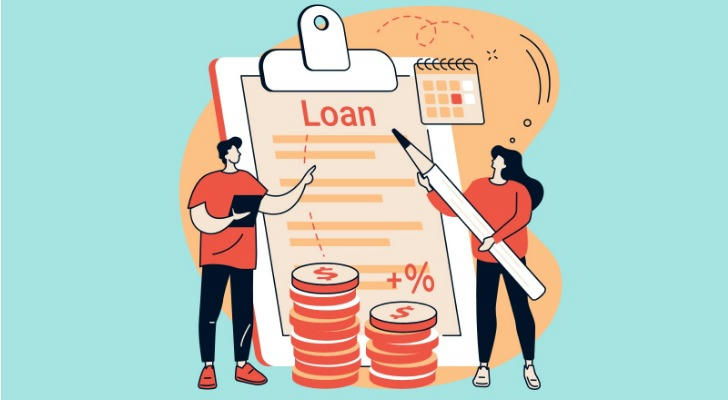Loan Guide: Step-by-Step Guide to Smart Borrowing
Loan Guide: Step-by-Step Guide to Smart Borrowing
In today’s America, loans have become an essential tool for achieving big goals—whether it’s buying a home, paying for college, starting a business, or covering emergency expenses. Have you ever wondered: “Which loan should I apply for?” or “How can I get the lowest interest rate?”
Whether you’re a young adult just entering the workforce, a family planning for major milestones, or an entrepreneur looking to grow, understanding the basics of borrowing is critical.
This article will walk you through what loans are, why they matter, the most common types, and how to borrow wisely and strategically.
1. What Is a Loan? 🔍
A loan is a financial tool that allows you to borrow money from a bank, credit union, or lending institution, with the agreement to repay it over time—typically with interest.
Loans are commonly used in the following areas:
- 🏡 Home Purchase (Mortgage)
- 🎓 Education (Student Loans)
- 🚗 Vehicle Purchase (Auto Loans)
- 💳 Consumer Spending (Credit Cards)
- 📈 Entrepreneurship (Small Business Loans)
- 🆘 Emergency Needs (Personal Loans)
Understanding different loan types and how they work is the first step toward making smart financial decisions.
2. Why Is It Important to Understand Loans? ❓
The average American carries over $90,000 in debt. Factors like interest rates, credit scores, and repayment terms can mean a difference of thousands of dollars. Knowing how loans work can help you:
- ✅ Avoid high-interest debt traps
- ✅ Protect your credit score
- ✅ Prepare for major purchases like a home
- ✅ Create financial stability through better planning
Loans aren’t your enemy—they’re tools. The key is knowing how to use them.

3. Common Loan Types and When to Use Them 📊
| Type | Best For | Typical Term | Collateral Required |
|---|---|---|---|
| Mortgage | Homebuyers | 15–30 years | ✅ Yes – home |
| Student Loan | College/Grad students | 10–25 years | ❌ No |
| Auto Loan | Car buyers | 3–7 years | ✅ Yes – vehicle |
| Credit Card | All consumers | Revolving | ❌ No |
| SBA Loan (Small Business) | Entrepreneurs & small business | 5–10 years | ✅ Yes – business/personal assets |
| Personal Loan | Individuals needing quick cash | 1–7 years | ❌ Often no |
💡 Tip: For official guidelines and consumer protection, visit the Consumer Financial Protection Bureau (CFPB).
4. How to Apply for Loans Wisely 🚀
Check Your Credit Score
- FICO scores range from 300 to 850. 720+ is considered excellent.
- Use a tool like Credit Karma or Experian to review your report.
Compare Loan Offers
- Don’t just look at the monthly payment—evaluate APR, fees, prepayment terms, and penalties.
- Shop around: banks, credit unions, online lenders.
Understand Your Repayment Ability
- Ideally, your monthly debt payments should be less than 30% of your monthly income.
- Create a realistic budget to avoid late payments.
Watch Out for Predatory Loans
- Avoid payday loans and ultra-high interest offers.
- Be cautious of unsolicited offers or shady online ads.
Read the Fine Print on Prepayment
- Some loans charge prepayment penalties. Always check the terms before paying off early.
5. Avoid These Common Loan Pitfalls ⚠️
| ❌ Misconception | 🔎 Reality | ✅ Better Approach |
|---|---|---|
| “All loans offer similar rates” | Rates can vary widely and cost thousands | Compare APR, not just monthly payment |
| “Bad credit = no loan options” | Some lenders offer secured or subprime loans | Improve credit or use a co-signer |
| “Credit cards are easy & convenient” | Revolving debt can grow quickly | Use credit cards wisely; pay full balance monthly |
| “Early repayment is always smart” | Some loans penalize early payoffs | Read your loan agreement before acting |
6. Loans Are Long-Term Tools, Not Just Emergency Fixes 🧭
Used properly, loans can help you:
- 🏠 Own a home
- 🎓 Complete your education
- 🚗 Enjoy mobility
- 📈 Build your credit history
The key is: Plan carefully, understand the terms, borrow responsibly. Loans aren’t one-time decisions—they require ongoing management and financial awareness.
7. Real-Life Case Study: How a Couple Paid Off $224,000 of Debt in 2.5 Years 💸➡️💼
Leo and Faith Jean-Louis, a married couple, started their journey with a combined debt of $224,000—including student loans and credit cards. Initially, they realized making only the minimum payments would take 15 years and cost an extra $125,000 in interest.
Here’s how they tackled it:
- Goal-Oriented: Their mission was to build generational wealth and gain financial freedom.
- Budget-Driven: They used a zero-based budgeting system to assign every dollar a purpose.
- Cutting Costs: They brought lunches from home, carpooled, and cooked instead of eating out.
- Boosting Income: Together, they juggled five jobs, including side hustles like babysitting and hospital part-time gigs. Their first-year side income reached $66,000.
- Repayment Strategy: They started with the debt avalanche method and switched to the debt snowball for faster wins.
Their discipline and teamwork helped them pay off nearly a quarter million dollars in just 2.5 years—excluding their mortgage.
🔗 Full Story: How a Couple Paid Off $224,000 of Debt in Less Than 3 Years – Business Insider

Summary 📝
Loans aren’t the problem—uninformed borrowing is. Debt isn’t failure—it’s about how you manage it.
In a world full of financial options, understanding how loans work—and how they fit into your long-term goals—puts you in control. You don’t have to be a finance expert, but you do need to be a smart borrower.
📌 Start with these simple actions:
- Check your credit score
- Set a debt reduction goal
- Learn one loan term (like “APR” or “pre-approval”)
Your future starts now—with knowledge, confidence, and a plan.
